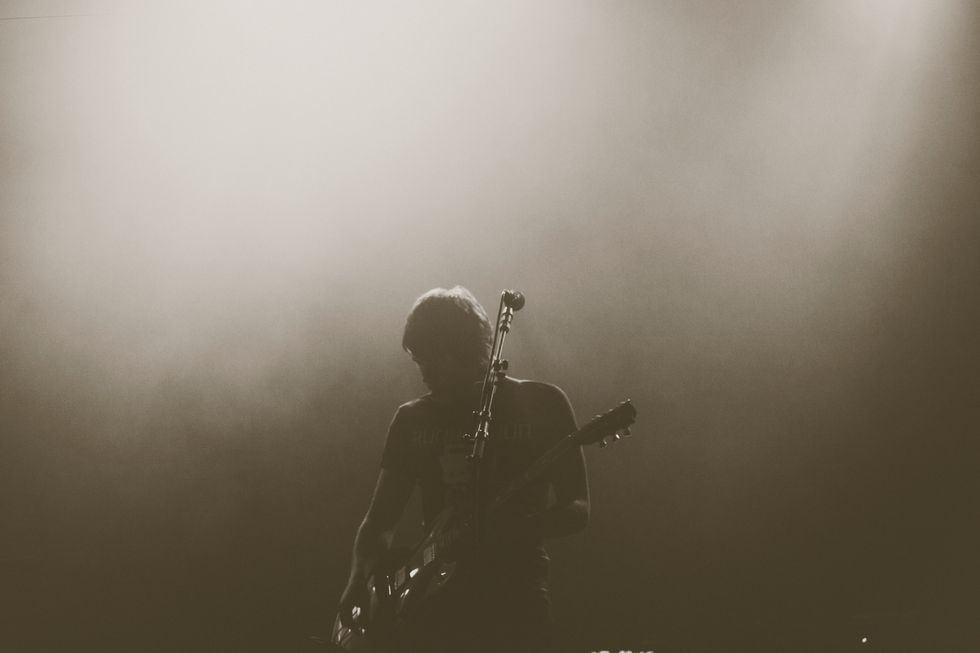CBGB might be the home of punk rock but it isn’t where the movement started. Before anyone was even thinking of punk there was The Velvet Underground, The Stooges and The New York Dolls. Their music built the foundation for other bands to create what we now know as punk rock. This can especially be seen with The Stooges who went on to play at CBGB. Their vocalist Iggy Pop was known for being a vulgar ball of energy on stage along with creating the stage dive.
In 1973 Hilly Kristal opened CBGB, which was meant to stand for the popular genres of Country Bluegrass and Blues but as we all know now that was not what was played at the bar. According to Kristal, this is because he wanted musicians who “played their own music instead of copying others [because] originality [to me] was prime, technique took second place.” These ideals are what caused Kristal to hire bands like Television to play at CBGB. It gave the dirty high energy music that is punk to come to life on the stage that Television built.
Now of course if we’re talking about punk music we have to talk about The Ramones. With their leather jackets and quais Beatles haircuts, they were the quintessential face of punk rock. Influenced by MC5 and The Stooges, The Ramones didn’t let their lack of skill stop them from making music. As described by Rolling Stones Magazine their music was comprised of “basic chords, pugnacity and a noise that could lay waste to — or awaken — anything.”
Then there was Blondie, a band who was as anti-establishment as the rest but who allowed their sound to be influenced by the pop and disco music of the time. This lead to them creating a subgenre of punk called pop punk but that’s a whole other story. Another aspect of Blondie that set them aside from the other punk bands was Debbie Harry. Downing her iconic blonde hair she took over the stage with enticing vocals that could easily transition from sweat to dirty while perfectly mixing with the rough instruments from the band.
While this was happening in New York City a different kind of punk was forming over in London. After Malcolm McLaren failed to reinvent the style of The New York Dolls he started a new project with what became The Sex Pistols. At his clothing store named SEX, he created the style that first comes to your head when you think of punk, the safety pins, spikes and chains that adorned almost every garment of distressed clothing.
The Dead Boys were the band to bring this fashion back to New York City when they performed at CBGB. They were heavily influenced by The Sex Pistols so their music too was filled with aggression and obscenities but while The Sex Pistols kept their lyrics political The Dead Boys were some simplistic.
This idea of bringing politics into your lyrical message was heavily used by The Clash, so much so that they became known as the mother of all political punk groups, according to the article “The Clash and The Punk Revolution.” They did this by continuing to be anti-establishment while bringing socialist ideas into their lyrics.
The Dead Kennedys were another band that wasn’t shy to put their political views on stage. Their vocalist Jello Biafra articulately yelled their political views at outrageously fast tempos, bringing their unpolished punk music to the next level. He even went on to run for mayor of San Francisco and while he didn’t win he did land in fourth place, according to San Francisco Weekly.
The Descendents — like Blondie — are also considered a pioneer of the subgenre pop punk. While their sound was no doubt punk their looks didn’t exactly fit the part and that’s because of their vocalist Milo Aukerman. Aukerman was a nerd who put his school work as his top priority, landing him with a doctorate in biochemistry but that didn’t stop him from taking time to play in the band. After all, he was their mascot of sorts, appearing on the cover of every album as the iconic sketch of Milo the nerd.
In 1990 the Punk Rock Feminism movement was formed. When girls like Kathleen Hanna noticed that most punk bands were male-dominated they demanded change. Once the punk scene began to grow older it became toxic towards women and not only did they want to be represented on stage but they wanted to feel safe at concerts once again. They did this through Riot Grrrl which started when these girls created Zines that turned into full-fledged punk bands like Bikini Kill. They would strut on stage with high ponytails and short mini-skirts posing questions like, “why aren’t boys called sluts?” according to The New York Times. The movement went on to include Joan Jett, Debbie Harry, Patti Smith and so many more women rockers who used their fame to make a difference.
Now I could go on with so many more bands that are a part of punk because it split off into so many different subgenres but that’s a whole new article. For now here’s a playlist of bands that either helped in creating punk or were influenced by it.





















